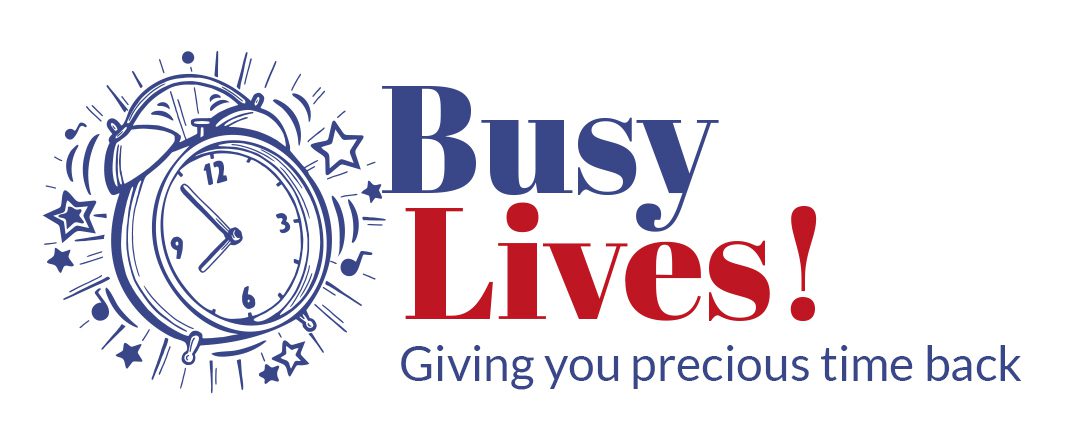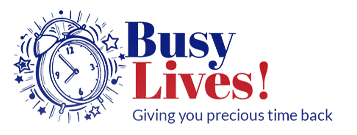
Preparing for Important Meetings
Spending time preparing for important meetings can really make a difference not only for yourself but the others who attend. An important meeting can potentially make or break your reputation or business. Whether it’s between you and your colleagues or you and a client / customer, every meeting needs to be professional and efficient.
Below are some tips and advice to help you prepare effectively to make sure every meeting goes extra smoothly.
Overview
- Purpose of the meeting
- Pre-reading and research
- Who needs to attend?
- How, when and where the will meeting taking place?
- Style of meeting
- Composing an agenda
- Initiations to the meeting
- How Busy Lives! can support you with this
Purpose of the meeting
Every meeting needs to have a purpose and goal; something you want to achieve by the end. You may find it helpful to write this down. Make sure your goal is specific, add a deadline and make sure it can be measured if relevant – this can be in terms of sales, product output, delegation, impact etc.
Top tip
Don’t have a meeting for the sake of having a meeting! You’d be surprised how many people make this mistake. ‘I always have a meeting on a Wednesday, so we’re having one!’ Colleagues will quickly become disengaged and switch off if there is no real purpose behind a meeting and using up their valuable time.
Pre- reading & research
Read all the associated paperwork for the meeting, making notes or highlighting against items you may wish to raise or comment upon.
It will very quickly come apparent who has or has not prepared for what is to be discussed. Don’t be that person.
If an agenda item being tabled or discussed isn’t something you don’t have first-hand experience of and will be required to decide upon, research additional information or look at evidence gathered towards it. This is invaluable if there is conflicting views in the meeting for you to be able to provide an insight. It will also help you in achieving the goal you want.
Who needs to attend?
When you set up a meeting everyone who attends should have a role to play or be relevant to what they do. Are the necessary? Decide if each person has a purpose, if you cannot find one, it is time to decide if they really need to attend. It may be better use of their time to either let them have access to the minutes or a short verbal summary of specific parts of the meeting afterwards which were relevant to them.
How, when and where is the meeting will take place?
Once you have decided on how many people are participating, you can decide when and where you are going to hold the meeting; that could mean deciding whether you are going to hold the meeting in person or online. If you are choosing to hold the meeting in person think about the best location for this. You may need to book a room or meeting space, this may dictate the time and place you can hold your meeting if not on your premises. Online meetings have more flexibility, but you should still ensure your participants have enough notice to ensure they are available at the appointed time.
3 Top tips
- Make sure the room is the right size for the number of people attending.
- Think what resources you may need access to such as a flip chart or projector if a presentation is going to be made for instance.
- The layout of the room will influence and make a difference. It needs to be factored into suit the style of your meeting. Think carefully how chairs and tables are set out. For instance, formal, relaxed discussion, presentation, debate, a difficult conversation or recruitment all need different layouts.
Composing an agenda
Now you know when and where your meeting is taking place it’s time to make an agenda. You will already know what the meeting is about. Carefully composing an agenda is the time to carefully allocate your use of meeting time for maximum effectiveness. Having a well-planned agenda means your meeting will flow and stay on track which not only makes your meeting achieve its goal but will also display your professionalism and ability to deliver on-time.
An agenda should typically fit on one side of A4 paper.
Essential information to go on the agenda
- Date
- Time
- Location
- People Attending
- Chair
- Minute taker / attendees taking their own notes
- Bulleted agenda items – If different people are presenting different items off the agenda, have their initials next to the specific bulleted item
- AOB (Any other business) – Think carefully if you want to allow this or not.
Other information you may wish to include after the agenda items at the bottom of the page:
- List of papers and documents that will be used or referred to during the meeting.
- Business priorities for the period.
- Vision statement or business strapline.
The agenda should be sent out at least two weeks in advance of the meeting. This allows attendees with different schedules and commitments prepare at a time that suits them.
Invitations to the meeting
Now you have a list of participants and a meeting place set up you need to send out invites. Reinforce the purpose, date, place and timings in the body of the invite you send. Ensure to send any related paperwork, documents or previous minutes that will be referenced or used alongside the agenda.
After sending out your invites keep a note of who is and isn’t attending. If key people cannot attend it may be worth considering rescheduling to a time when everyone can attend. If only one or two people cannot attend decide if the meeting should go on ahead on that date – if you do decide to carry on make a note who cannot attend and send them any minutes paperwork they may need in order to remain informed.
Last Top Tip
Print off the agenda and all papers in advance of your meeting. If there are a number of papers being discussed from the agenda it’s worth spending the time ordering the papers to coincide in the same order as the agenda item. I then label each document in the top right-hand corner with the Agenda item number on. This helps you quickly reference the exact paper you need within the meeting and again demonstrates to others you’re professionally prepared and organised.
This can also be achieved electronically. Create a folder with the agenda all the documents for the meeting in. When you save each document into the folder save the file name commencing with the agenda item number followed by the title. This will help you quickly access what you need to open as the meeting progresses.
How Busy Lives! can support you with this
Busy Lives! was created when I left a busy career that left me time poor and not able to give sufficient priority to what really mattered to me. I now provide a wide range of business support for people in that position.
I am happy to help by:
- Helping you prepare for an important meeting.
- Composition and circulation of any agenda and related documentation.
- Minute taking during the meeting so that you can concentrate on achieving your goal.
Let you help you gain precious time back. Ring Busy Lives! 07565 722 031
Drop me a message on LinkedIn / Messenger on Facebook
Or Email: karen@busylivesnottingham.co.uk


